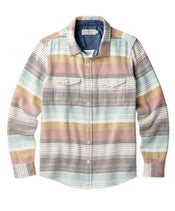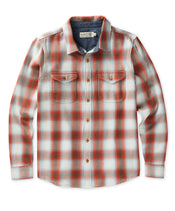Journey

Journey
David Hertz & Syndecrete
60-year-old David Hertz is an architect, inventor, and educator. The son of a surgeon father and artist mother, he grew up in LA, surfing the point breaks of Malibu and sneaking into construction sites (he was fascinated by the process of building). He got his start in architecture when a sympathetic homeowner caught him wandering around his property. The owner introduced him to the building’s designer, famed LA architect John Lautner. Hertz apprenticed under Lautner for four years. He graduated from Southern California Institute of Architecture in 1980. Three years later, he invented Syndecrete, a precast lightweight surfacing material made with post-consumer carpeting and waste, that paved the way for all environmentally-conscious architecture to follow.
“I was doing a lot of furniture out of concrete, then I started doing countertops and molded sinks and things—this is in like '83, long before anyone was thinking about concrete as an interior material,” Hertz explains. “Syndecrete is half the weight of normal concrete and shapeable with working tools. I ended up with 600 colors and all kinds of material that’s extracted from society's waste stream that I would go mine. In America, we're much better at producing waste than products. For every truckload of products, 32 truckloads of waste is generated. So I started looking at what we can do to mine our waste stream creatively.I worked with Rhino Records after the LA Riots, and I used the South Central Gang Intervention Program to take their aggressions out on old records, VCRs, CDs, DVDs, break them all up with hammers, throw it into a mixture and then grind it down where you'd see the gears and the record labels and all the parts, and that became the Rhino Records corporate offices flooring, done in an environmentally-responsible way by using their own waste instead of landfilling it in a socially responsible way.”

Hertz’s firm, The Studio of Environmental Architecture, is located in Venice Beach, where he surfs regularly. Here are a couple of his projects:
 The Wing House
The Wing House
“What that project looks like with the sculptural nature of the wings, they're eight-feet thick there. They hit the root at the fuse lodge. They're about 55-feet long in this case but 130-feet long. So you've got these giant floating wings with just a few points of connection at the ground with the floor-to-ceiling glass so that you cascade down a mountain range in Malibu – a 55-acre lookout over the plains of Ventura and Oxnard, this is the bony ridge. The sculptural aspect of the aluminum, the honest expression of the aluminum, and the sculptural nature of the wing, as you cut it, is not dissimilar to the beauty you'd find in a ship's hull or a surfboard. And part of that is because a wing is shaped by the forces of nature, the laws of thermodynamics. It's not based on a fad or fashion or style, and so is a whale or a dolphin or a surfboard really. It very much has a rail line and a shape, and these are the two horizontal tail stabilizers. You get to experience this object, you get to experience the top of the wing, as if you are essentially flying because the sight descends away from you. You get to experience the underside and the rivets and the reflectivity and the curvilinear nature, and you get to experience the variety of shapes whether you're on top of it or underneath it or right in line with it, as it goes from a thick to a thin shape.
This is a project that somewhat comes full circle, stemming back from my early interests in sustainability issues, which also came from issues of growing up, surfing in Santa Monica Bay, and seeing this incredible resource in the ‘60s turn into a human cesspool, and then seeing a kind of die off, then seeing it come back, and being an early environmentalist in terms of ocean, then trying to rationalize. How do I rationalize being part of the built environment and the impacts that had on the natural one? So that's always been an interesting struggle, and why I've been practicing sustainable architecture as a way to minimize the impacts of the built environment on the natural one, and how to use the natural environment. So we are very interested in natural energy flows, what nature offers us in terms of passive solar heating, natural ventilation, really understanding airflow in and around buildings, and it also comes from experienced sailing and understanding the dynamics of sails and wind flow and kind of being in tune with natural forces—that helps me shape buildings in a better way.”

The Californication House
“This is the house in the TV show ‘Californication’. I actually live there. I designed it based on my surf travels in Indonesia, in particular Bali, and the way in which the Balinese created multi-generational family compounds. So this building, this long house, is two lots. I bought a vacant lot in 1994, built a house, and didn't think I could even afford to stay there. It’s something of a Southeast Bali modern meets Venice craftsman meets Schindler. It became somewhat iconic in the use of the show as representing California and indoor-outdoor living. Even though it's in Venice, it has a sense of being removed and being tropical.”





